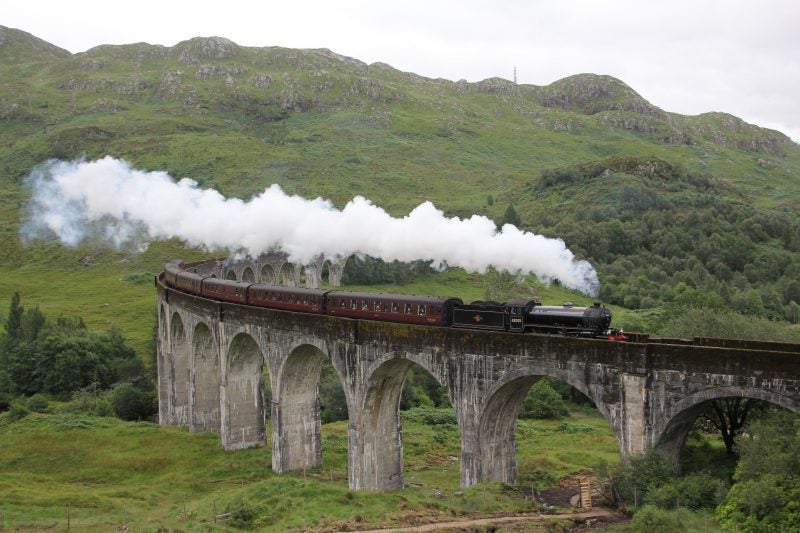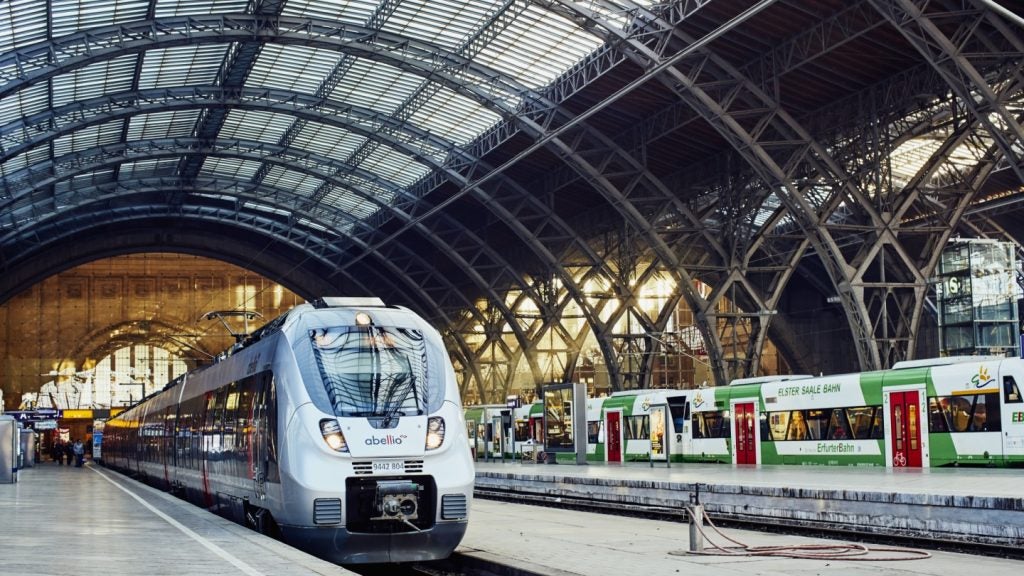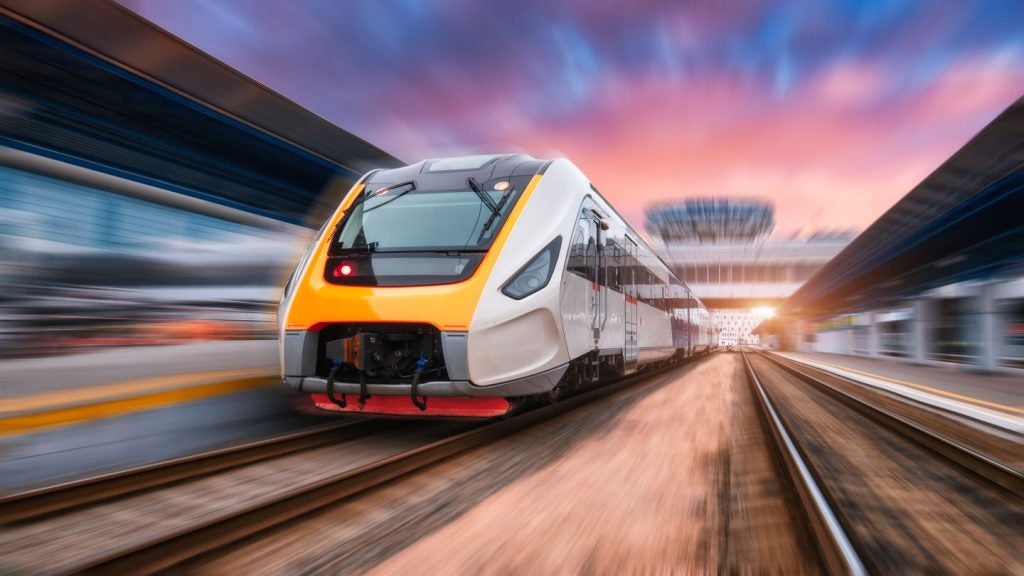
People usually consider train rides a necessity, to be used either for travelling or work. What most of them don’t know is that Europe has some of the most beautiful railway routes in the world. According to the Telegraph, out of 25 most beautiful train journeys, 11 are located in the European continent while the Guardian lists European routes amongst the 18 best ones.
We take a look at some of Europe’s most scenic railway journeys.
West Highland Line, UK

Credit: “96tommy”.
Crossing the famous Glenfinnan viaduct, the West Highland Line is one of Britain’s most scenic railway routes and in 2009 was crowned Best Rail Journey at the Wanderlust Travel Awards.
The railway connects Glasgow to the Scottish Highlands’ towns of Fort William and Mallaig, 123 miles and 164 miles respectively. The railway is not particularly fast, as trains take 3h45 to go to Fort William and 5h15 for Mallaig.
How well do you really know your competitors?
Access the most comprehensive Company Profiles on the market, powered by GlobalData. Save hours of research. Gain competitive edge.

Thank you!
Your download email will arrive shortly
Not ready to buy yet? Download a free sample
We are confident about the unique quality of our Company Profiles. However, we want you to make the most beneficial decision for your business, so we offer a free sample that you can download by submitting the below form
By GlobalDataThe line was first opened in 1894 to link Glasgow and Fort William, while the Mallaig extension – which was built to connect the inland to the coast – was opened in 1901.
In October 2019, the line was closed for ten days to refurbish its bridges and renew the under-track drainage systems. “We’ll be renewing and rebuilding drainage culverts under the line, which given the recent weather, is an important task,” said Network Rail Scotland head of maintenance Lindsay Saddler.
“These are significant and complex pieces of work and it is simply not possible to complete them without closing the line for a short time.”
Glacier Express, Switzerland

Credit: Glacier Express.
Travelling through the Swiss cantons of Valais, Uri and Graubünden in the span of eight hours, the Glacier express is considered the slowest express train in the world.
It was first opened in June 1930 with the aim to connect the towns of St Moritz and Zermatt, which were becoming popular winter destinations for the European upper classes.
In recent years, the 290km of railway were operated by Swiss railway companies Matterhorn Gotthard Bahn and Rätische Bahn. In 2017, they formed a separate company named Glacier Express AG.
With modern panoramic coaches built specifically in 2006, the Glacier Express is a luxury way to travel across Switzerland. There are the classes inside the train: second, first – where food is served in china plates – and, since 2019, the excellent class.
The excellent class option runs from March to October and is made up of deluxe panoramic coaches, with a five-course meal included.
In recent years, the Glacier Express made the headlines when it derailed whilst travelling over a viaduct between the towns of Lax and Fiesch, located in the Valais canton. The accident, which was the result of human error, left one dead and more than 40 people injured.
Linha do Douro, Portugal

Credit: Pablo Nieto Abad.
Situated in northern Portugal, the Linha do Douro (Douro Line) connects Porto to the village of Pocinho, running for 175km close to the Douro River.
Considered one of Europe’s best railway journeys, the line was subjected to modernisation works starting in May 2020.
With a €4m investment, Railway infrastructure manager Infraestruturas de Portugal completed three slope stabilisation works to reinforce safety conditions along the line.
As a total of 15 embankments were built where there was a risk of falling blocks, the company also carried out deforestation, sanitation and drainage works.
The works are part of a general investment plan which will be carried out by Infraestruturas de Portugal over the next few years, with a €20m investment.
Belgrade – Bar Railway, Serbia and Montenegro

Credit: Chico Boomba.
With its 435 bridges and 254 tunnels, the railway line that goes from the Serbian capital of Belgrade to the coastal town of Bar, Montenegro, is one of Europe’s most scenic and lesser-known railway routes.
The railway, which was opened in 1976 by Yugoslav President Tito, runs for 476km through the two countries.
Passing through an ever-changing landscape made of mountains, forests and hills, the trains on the Belgrade – Bar railway stop in towns such as Užice, the first in former Yugoslavia to be liberated from the Germans during WWII.
Particularly famous is the Mala Rijeka viaduct, one of the highest bridges in the world.
In October 2019, modernisation works on the line were signed off between Serbian Transport Minister Zorana Mihajlović and Russian Railways.
Semmering Railway, Austria

Credit: Miroslav Volek.
Built between 1848 and 1848 by designer Carl von Ghega, the 41km-long Semmering Railway was declared a UNESCO World Heritage in 1998.
Connecting the towns of Gloggnitz and Mürzzuschlag, the Semmering Line was one of the first mountain railways ever built.
The railway – which includes 14 tunnels, 16 viaducts, 118 arched-stone bridges and 11 iron bridges – offers spectacular views as it was designed to work in harmony with the environment.
In 2012, works began for a 27km-base tunnel, one of the world’s longest railway tunnels. The developments – which include parallel bores with a 10m diameter connected by cross-passages – cost €3.3bn and are expected to be over by 2026.
As reported previously by Rail Technology, the line will reduce travel times between Vienna and Graz, Austria’s second-largest city.





